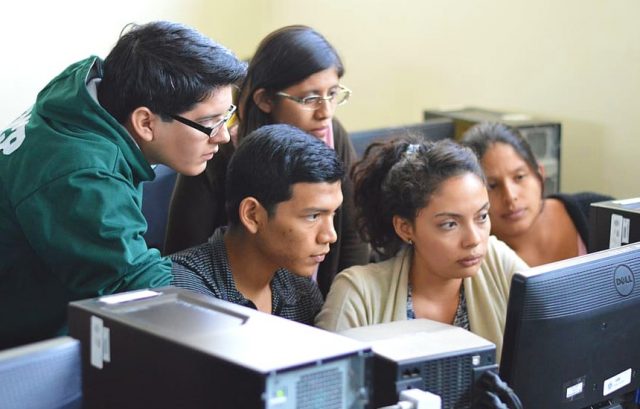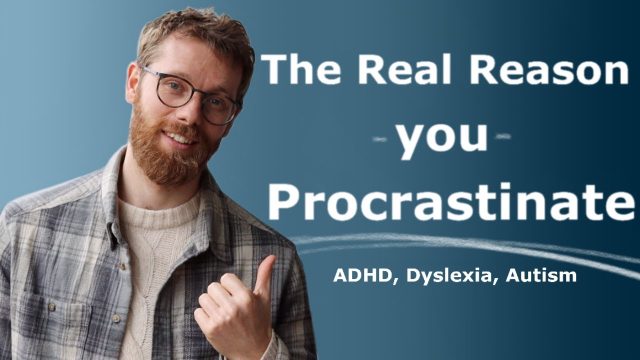The Sociology of Dyslexia

When thinking about a disability, illness or neurodiversity, individuals often consider these purely in a medical or biological sense. In this way, attention is focused solely on their symptomology, causation, diagnostic methods, and treatment. Understanding and appreciating the medical side of human differences is of vital importance. Yet, one drawback remains. Disability, illnesses, and neurodiversities can become overly medicalised; neglecting other factors that influence their existence in society. In overemphasising the biological side we may miss the social, psychological and emotional causes and impacts that disabilities and/or neurodiversities can have, including stigmatisation and reduced self-esteem. From a sociological stance, exploring the social, cultural and political side of dyslexia is crucial to gaining insights which are often neglected and overlooked.
Within this post, the social model of disability shall be outlined, discussed and explained in relation to dyslexia, in order to show how social factors shape the world dyslexics live within and experience. It is crucial to note that within this post dyslexia itself will be described and referred to as a neurodiversity, and not a disability. It this way, I hope to show that the social model can be applied to and theorised in relation to neurodiversities; and not disabilities alone.
Understanding the Social Model of Disability and Illness
From a biological and medical perspective, dyslexia is seen as a natural neurological variation (neurodiversity). Whereby, individuals process information and learn in differing ways to those who are neurotypical. In contrast, the social model popularised by Oliver (1996:35, in Anastasiou & Kauffman, 2013) emphasises that “disability is wholly and exclusively social”. In this way, disability, or in relation to dyslexia neurodiversities, are socially constructed often by ‘societal barriers’, such as negative reactions and responses. ‘Societal barriers’ including prejudice, stigma, a lack of thorough understanding, and social exclusion can all prevent neurodiverse individuals from leading a fulfilling life. In addition to societal reactions, the social model also considers additional factors that can influence wellbeing that are often overlooked by alternative models; for example, class, employment status, and gender.
In order to benefit individuals, the social model aims to identify and negate these negative influencers in order to increase an individual’s self-esteem and independence. As a framework overall, the social model does not deny the importance of medical models, as these largely explain the causation and etiology of human conditions. Vitally, it stresses the importance of combining these two social and medical/biological perspectives to provide a multidisciplinary and comprehensive understanding of disability and neurodiversities.
Dyslexia and the Social Model
During my time at university one of the modules that really captured my interest was titled the ‘Sociology of Health and Illness’, in which various models of illness including the social and medical models were discussed. Despite being in the process of being referred for a dyslexia assessment, at the time I had not considered how these theories and models could be applied to dyslexia as a neurodiversity. Fast forwarding many months, I began to delve into literature that made these crucial links.
Sociology as a discipline explores society as whole and how we live within its walls, rather than focusing solely on the individual. Renowned sociological theories, such as the social model, emphasise how topical real-life issues can be caused and maintained within society itself. So often we hear stories of dyslexics being accused as ‘thick, lazy or stupid’ merely because they process and absorb information differently to others. In line with the theoretical framework of the social model, this stigmatisation is socially constructed as these negative labels come from others within modern-day society.

Sociologist Erving Goffman popularised the term ‘identity blemish’, which stressed the detrimental impacts stigma can have on an individual’s self-esteem and self-motivation. This process of labelling highlights the real negative side of society, and the social model, as discrimination comes from within a community itself. Within his article exploring dyslexia in relation to the social model, McDonald (2009) emphasised the real-life impacts stigmatisation can have upon dyslexic adults. Within interviews, it is discussed that individuals can be excluded from and avoid new career opportunities, educational environments, and training prospects. Crucially, this can be attributed to fear of embarrassment, failure, and further ridicule during job interviews, competency testing, and administrative duties because of their dyslexic characteristics.
In addition to stigma, McDonald also discussed other social barriers that can impact upon the daily lives of dyslexics. Notably, the educational system was strongly discussed. From within his interviews, McDonald highlighted specific concerns regarding overly large class sizes and work/tasks not being accessible or adjusted to dyslexic learners. Because of these barriers, dyslexics recalled difficulties at school, college or university that made it extremely challenging to hide or mask their dyslexia from others.
For me, this posed a rather poignant question – why in contemporary society should a dyslexic feel they need to hide, mask and deny their dyslexia? Instead, society ought to pull together in order to eliminate these detrimental social barriers. It is vital to note that I have really emphasised the negative side of the social model and have given a worst-case scenario of how socially constructed and maintained stigma can personally impact on dyslexics. Yet, within the next section I will turn this on its head and explore the opposing positive side of the social model in conjunction with dyslexia.
On a much more positive, encouraging and constructive note the social model ultimately strives to reduce social barriers for the neurodiverse population. A great explanatory article by Spectrum (2013) explores how those with a disability, or (in relation to dyslexia) a neurodiversity, should not be shunned and excluded from mainstream society. For example, for those who have difficulty walking and climbing stairs, seating, lifts, and escalators are added to make public places more assessable. Within the ideology of the social model being neurodiverse is not an individual problem or issue. Instead, society itself ought to challenge and combat these barriers to ensure every individual has the same rights and opportunities as all others.
Furthermore, a lack of awareness and understanding of a neurodiversity can also act as a social barrier. If society fails to understand these naturally occurring human differences and the impacts it can have on one’s daily life, they may be unaware of what the barriers are and how to remove them. Subsequently, the social model strongly emphasises understanding and education of all human differences across all societies.
In relation to dyslexia, the ideologies of the social model can be deployed in order to identify and remove the daily obstacles and barriers dyslexic individuals face. Within his research, McDonald concluded that assistive technologies, reasonable adjustments, and tailored support are the ‘social solutions’ to eradicating social barriers for dyslexics. Regardless of individual’s background, employment status or educational history, dyslexic individuals should not be ignored, excluded and stigmatised within a society, simply because of their dyslexia. In stark contrast, individuals should be given the opportunities and tools by society to excel in life in order to manage and potentially improve their dyslexic-related difficulties.
Summary
Within this post two key factors were explored: the often unconsidered social aspects of dyslexia and that the social model of disability and illness can be applied to neurodiversities; including dyslexia. As discussed, the social model outlines and explains how social processes can both negatively and positively impact the daily lives of the dyslexic community. ‘Social barriers’, exclusion and stigmatisation can be both constructed and maintained yet also removed and negated within society itself. Understanding dyslexia and providing dyslexics with support and reasonable adjustments are argued to be the key social solutions to such stigma and discrimination. I hope that this topic of discussion has provided ‘food for thought’ around the sociology of dyslexia; of how societal reactions and perceptions can influence the real ‘living lives’ of the vast dyslexic community.
References:
- Anastasiou, D & Kauffman, J, (2013). The Social Model of Disability: Dichotomy between Impairment and Disability, Journal of Medicine and Philosophy, 38(4): 441-459;
- Macdonald, S, J. (2009) Windows of Refection: Conceptualising Dyslexia using the Social Model of Disability, Dyslexia, 15: 347-362.
- Spectrum Centre for Independent Living CIC: The Social Model Explained. (2013)
For more info on stigma and exclusion in dyslexics see my blog post, The dark side of dyslexia: Stigma









